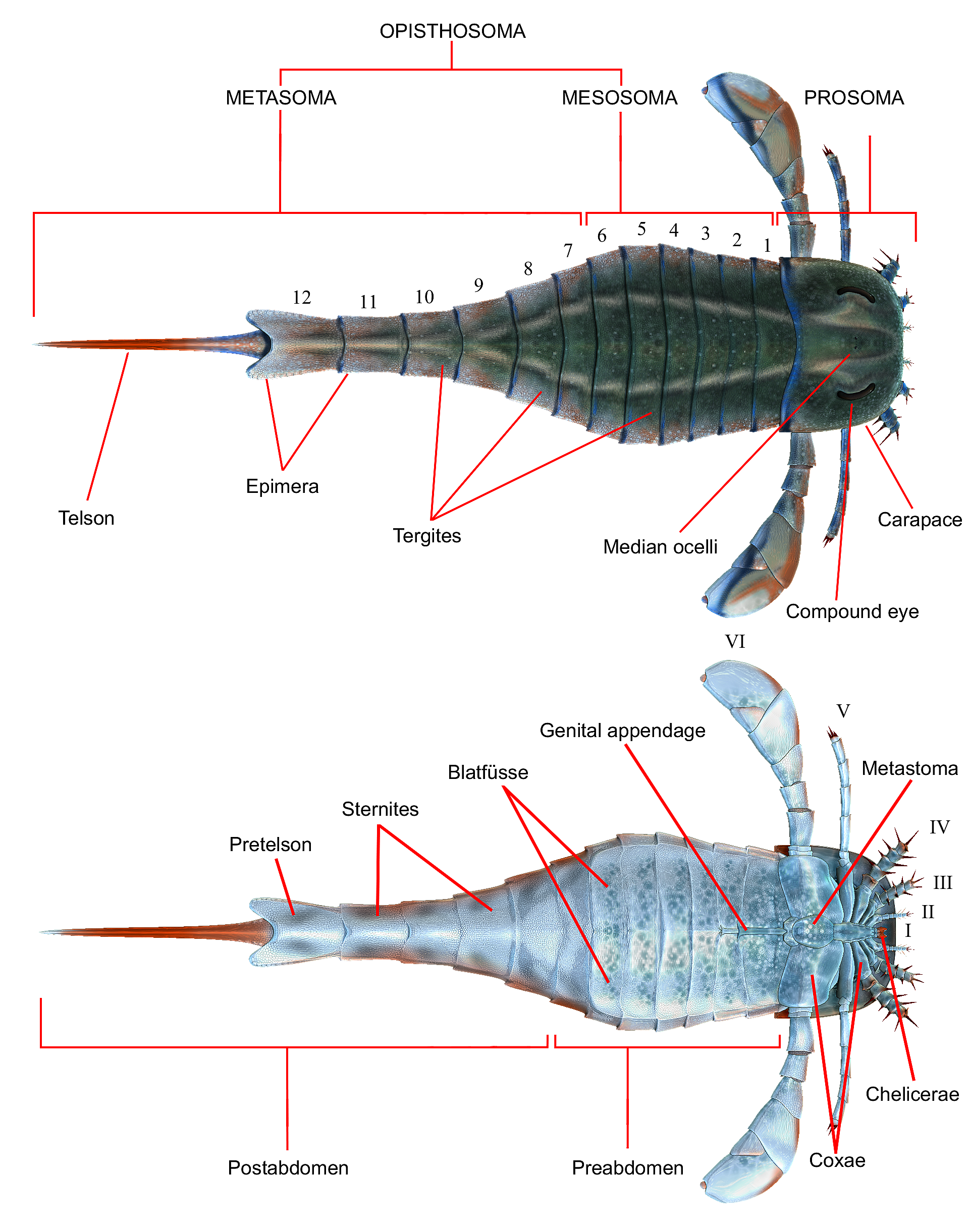|
Eurypterids Of Asia
Eurypterids, often informally called sea scorpions, are a group of extinct marine arthropods that form the order Eurypterida. The earliest known eurypterids date to the Darriwilian stage of the Ordovician period, 467.3 million years ago. The group is likely to have appeared first either during the Early Ordovician or Late Cambrian period. With approximately 250 species, the Eurypterida is the most diverse Paleozoic chelicerate order. Following their appearance during the Ordovician, eurypterids became major components of marine faunas during the Silurian, from which the majority of eurypterid species have been described. The Silurian genus ''Eurypterus'' accounts for more than 90% of all known eurypterid specimens. Though the group continued to diversify during the subsequent Devonian period, the eurypterids were heavily affected by the Late Devonian extinction event. They declined in numbers and diversity until becoming extinct during the Permian–Triassic extinction event (or ... [...More Info...] [...Related Items...] OR: [Wikipedia] [Google] [Baidu] |
Eurypterus
''Eurypterus'' ( ) is an extinct genus of eurypterid, a group of organisms commonly called "sea scorpions". The genus lived during the Silurian period, from around 432 to 418 million years ago. ''Eurypterus'' is by far the most well-studied and well-known eurypterid. ''Eurypterus'' fossil specimens probably represent more than 95% of all known eurypterid specimens. There are fifteen species belonging to the genus ''Eurypterus'', the most common of which is ''E. remipes'', the first eurypterid fossil discovered and the List of U.S. state fossils, state fossil of New York (state), New York. Members of ''Eurypterus'' averaged at about in length, but the largest individual discovered was estimated to be long. They all possessed spine-bearing appendages and a large paddle they used for swimming. They were Generalist and specialist species, generalist species, equally likely to engage in predation or scavenging. Discovery The first fossil of ''Eurypterus'' was found in 1818 by S ... [...More Info...] [...Related Items...] OR: [Wikipedia] [Google] [Baidu] |

